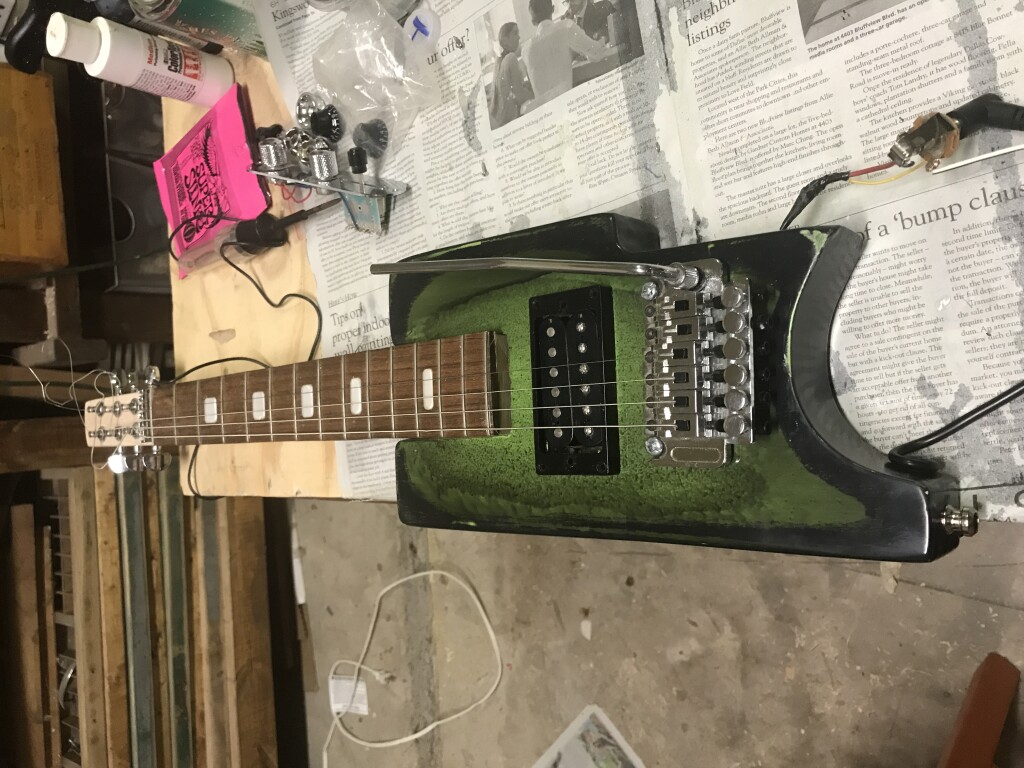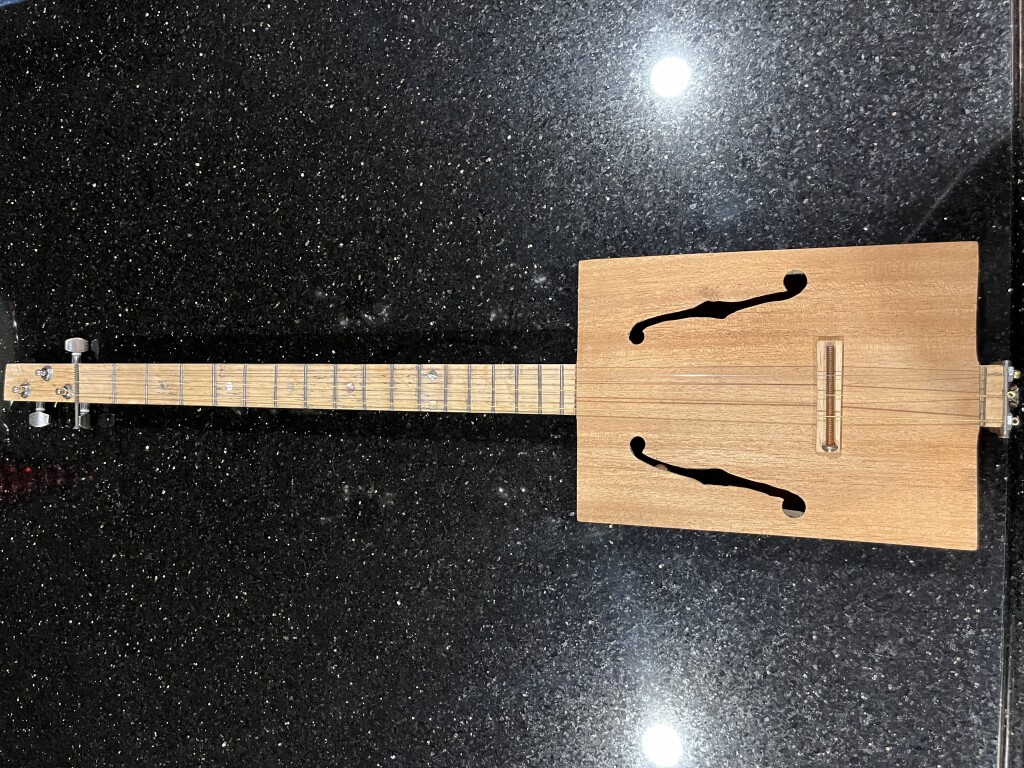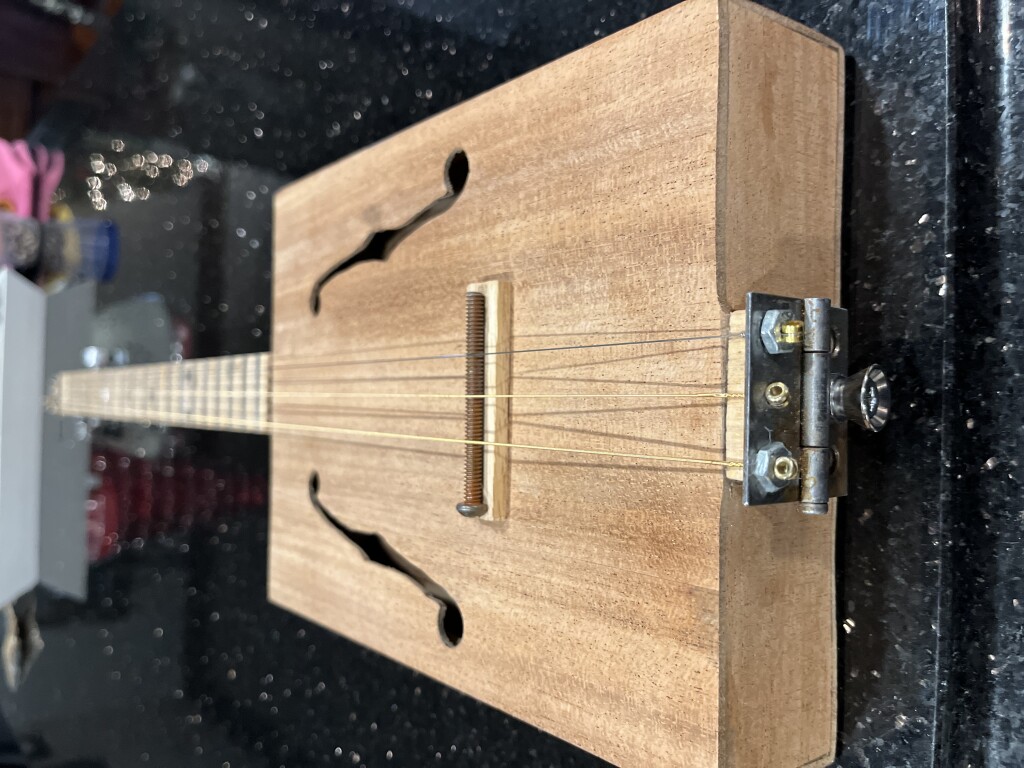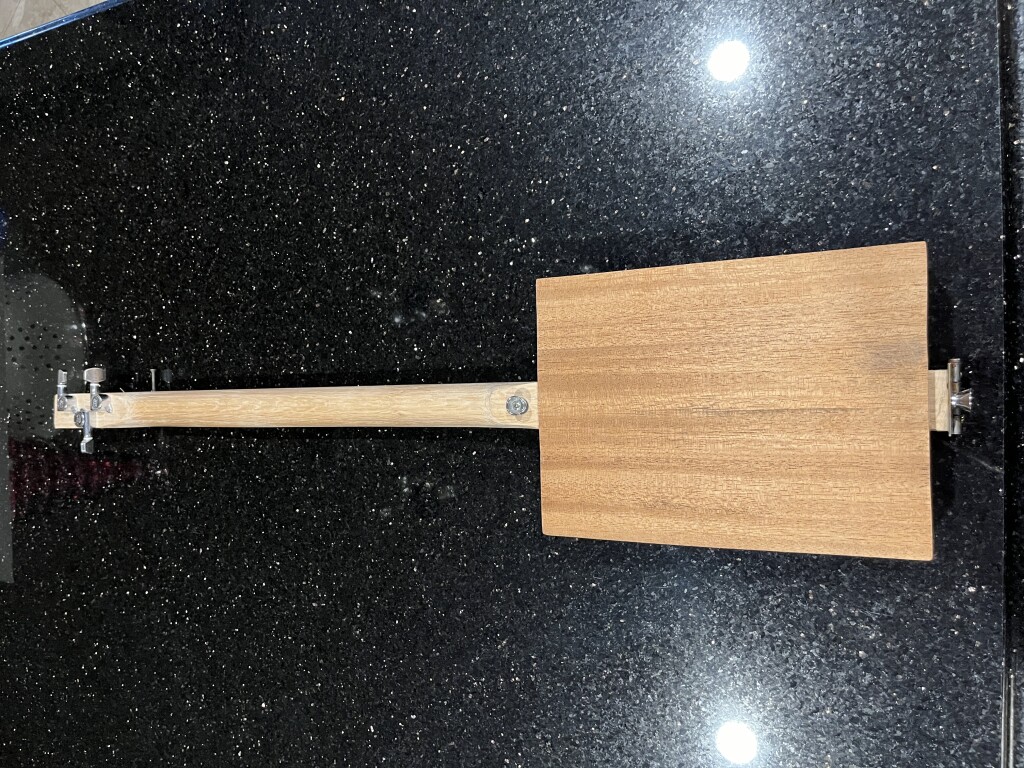Guitars have long been an interest bordering-on-obsession of mine. I love music and the guitar is easily my favorite instrument, but not just because of the aural aspect. The aesthetic range of the instrument is just as vast as the timbres of sound it creates. From the menacing horns of the Gibson SG, the otherworldly, futuristic, atomic Flying V to the funky Fender Telecaster and Stratocaster to the elegant heft of a Gretsch hollow body to the refined grace of the Ramirez classical, guitars excite me. Some people are drawn to specific models or brands, while others appreciate the variety of the field. I fall into the latter category. I have certain preferences, but overall, I have never met a guitar I didn’t like. Barebones to elaborate designs, every guitar has its place, has its voice, has its use.
I tinker on one guitar or another every day, but even when I’m not, I like to look at them as art. Luthiers are just as important as the musicians who play their works. Both are artists. Being a creative person, I wanted to try my hand at building the instrument.
I chose the Fender Telecaster as my first project for several reasons. The design is simple yet elegant, as utilitarian as it is visually pleasing, and has not changed in over seventy years.
The body can be cut from a single piece of wood and is flat on front and back. There is only a single cutaway on the bottom to allow access to the upper register frets.There is minimal cavity work required to house the electronics in the body. The neck is also a single piece of wood and doesn’t require any complicated angles at the headstock for correct intonation.
I sourced the wood from several online suppliers and chose hard maple for the neck and poplar for the body. I also bought an MDF router template that I proceeded to chew up with my router until I got the hang of it.
Carving the neck and cutting the B logo for my headstock from abalone shell was fun and I enjoyed the simplicity of using hand carving tools rather than noisy machines. It took me a few swings at painting the sunburst before I got to a place I could live with.
The electronics were a little difficult and easily the most frustrating element, as I had no wiring diagrams and mistakenly bought each component separately from different vendors and later found they were not as easily assembled as I had hoped.
The process was tedious at times and I used the trial-and-error approach on almost all aspects of the build. Having gotten my bearings, I continue to experiment on other builds and projects, some of which I will write more about in the future.
–Trev
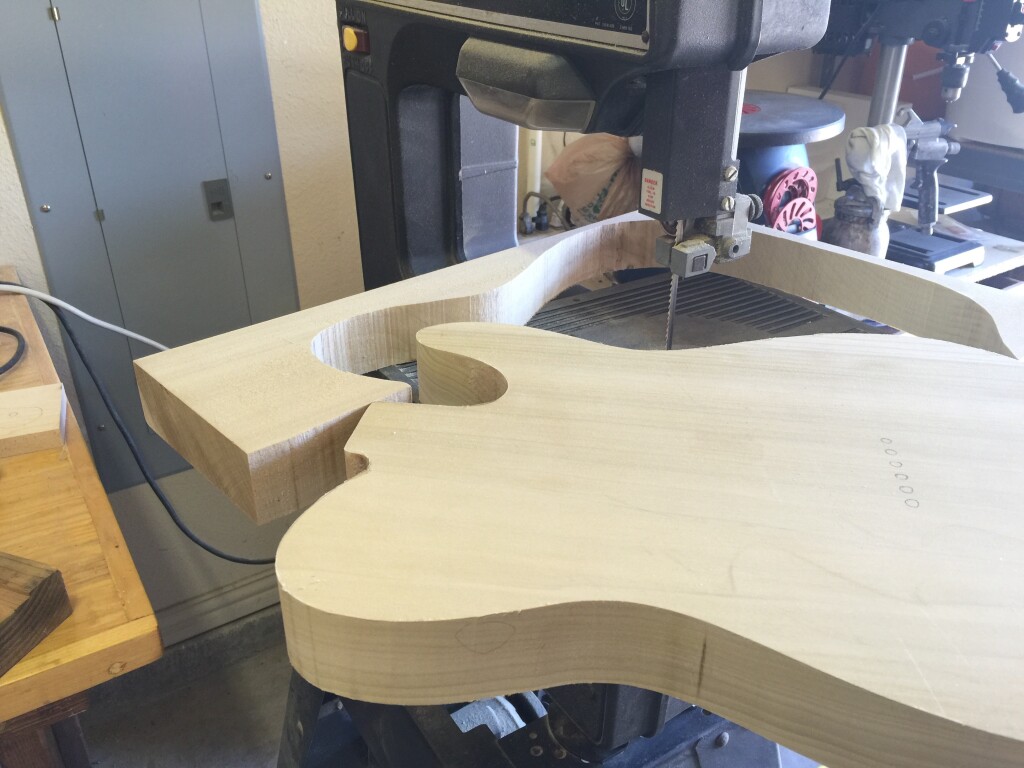
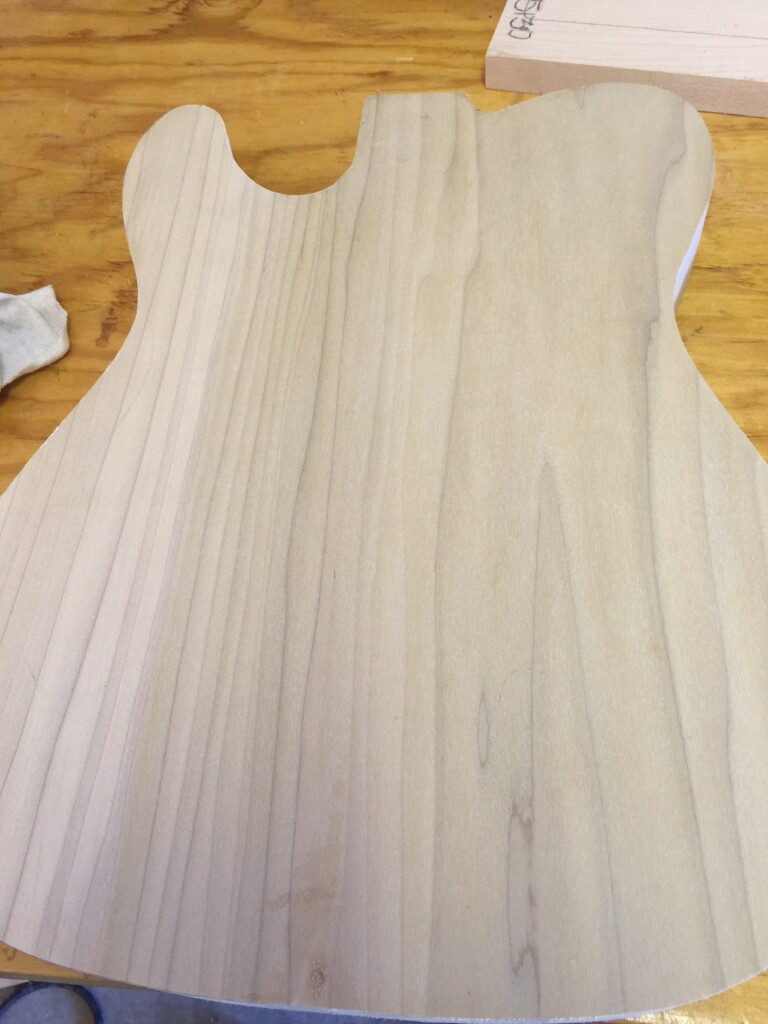
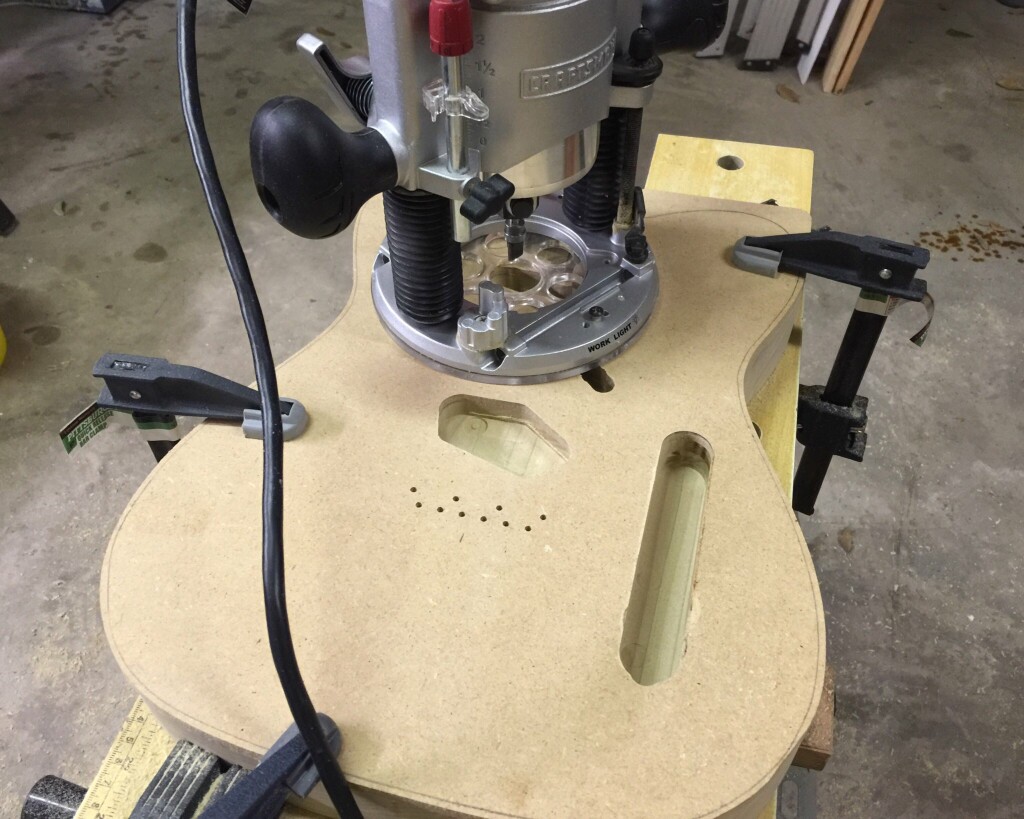
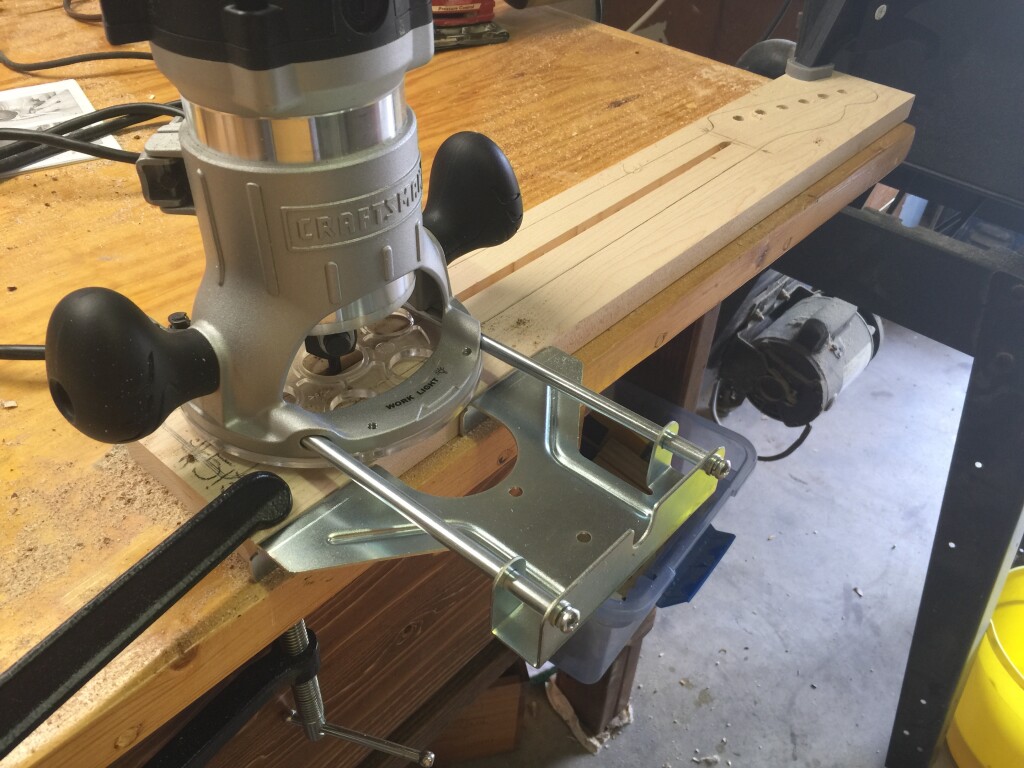
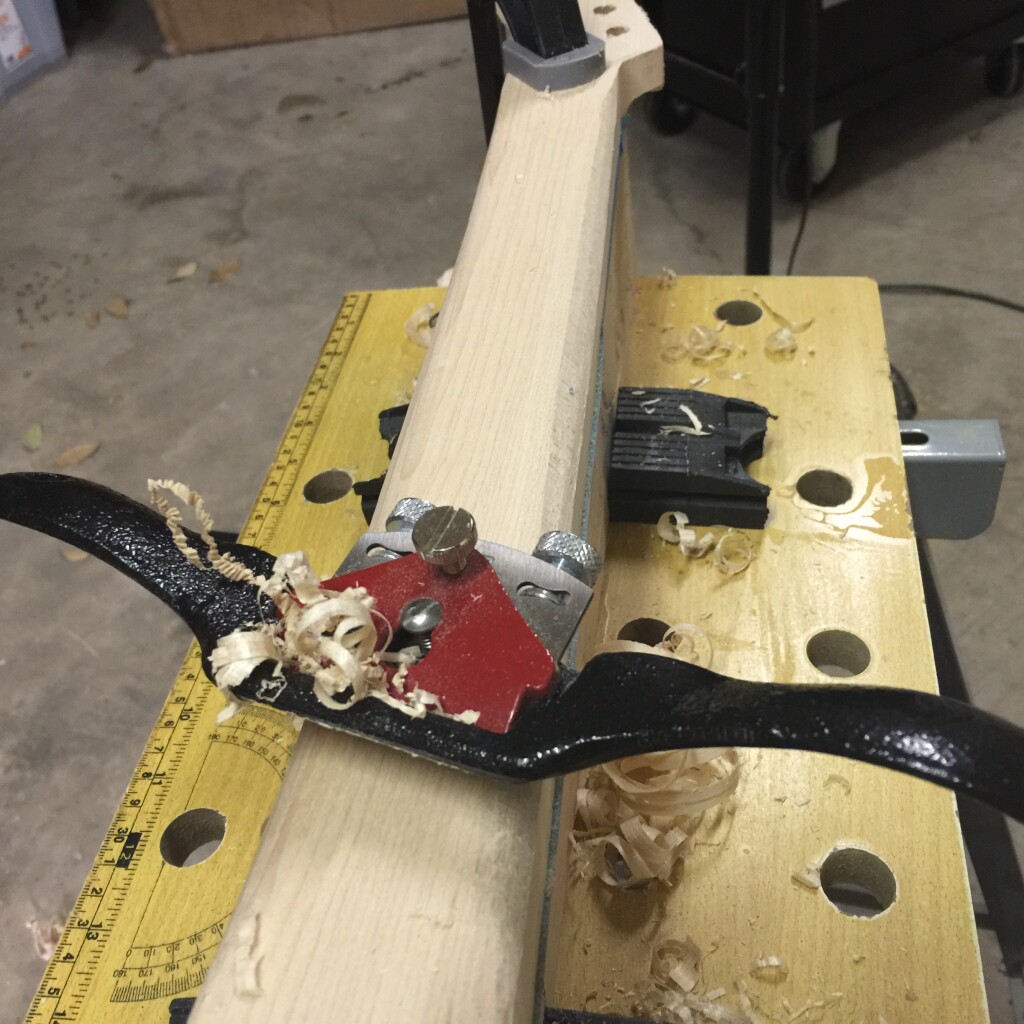
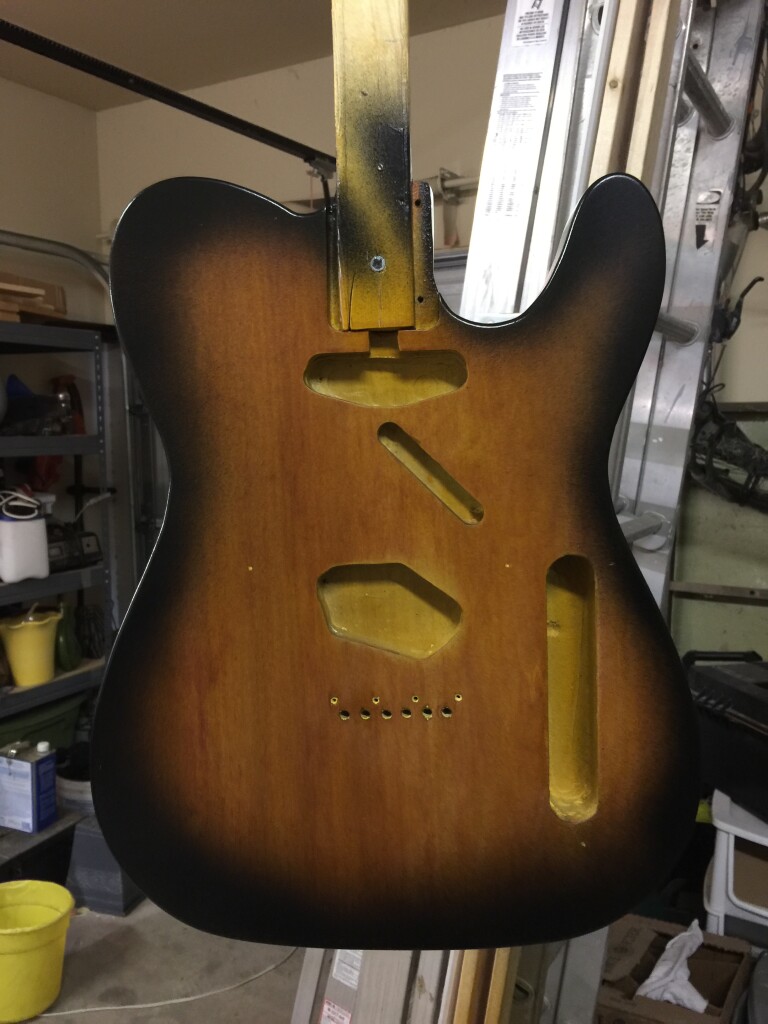
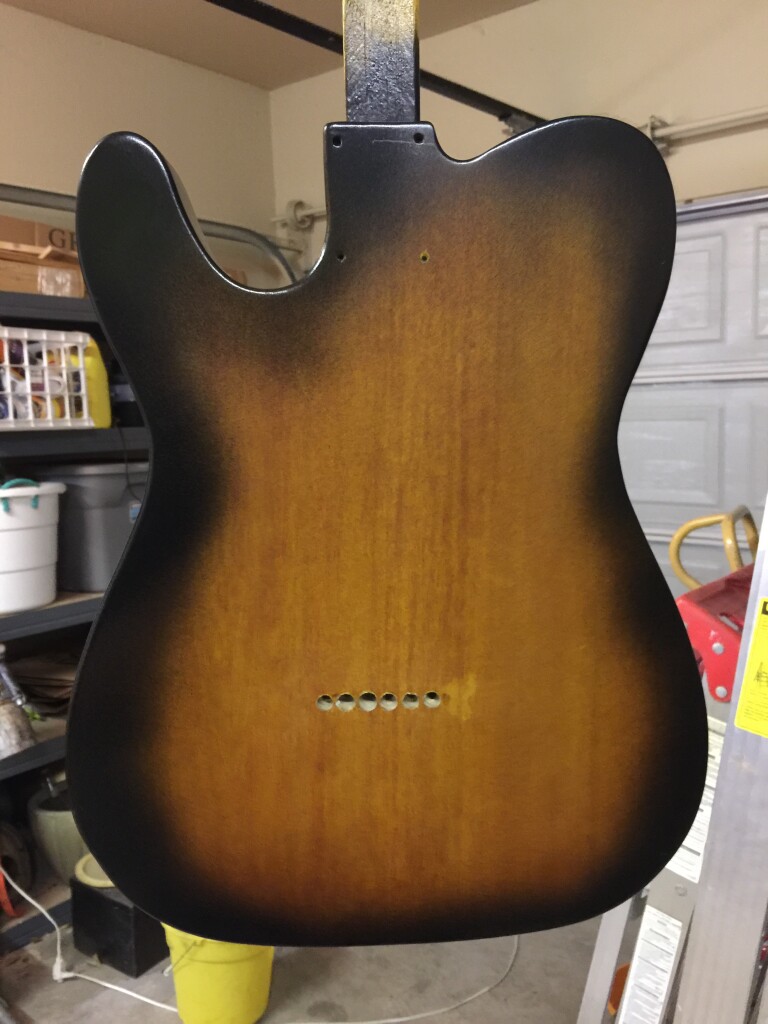
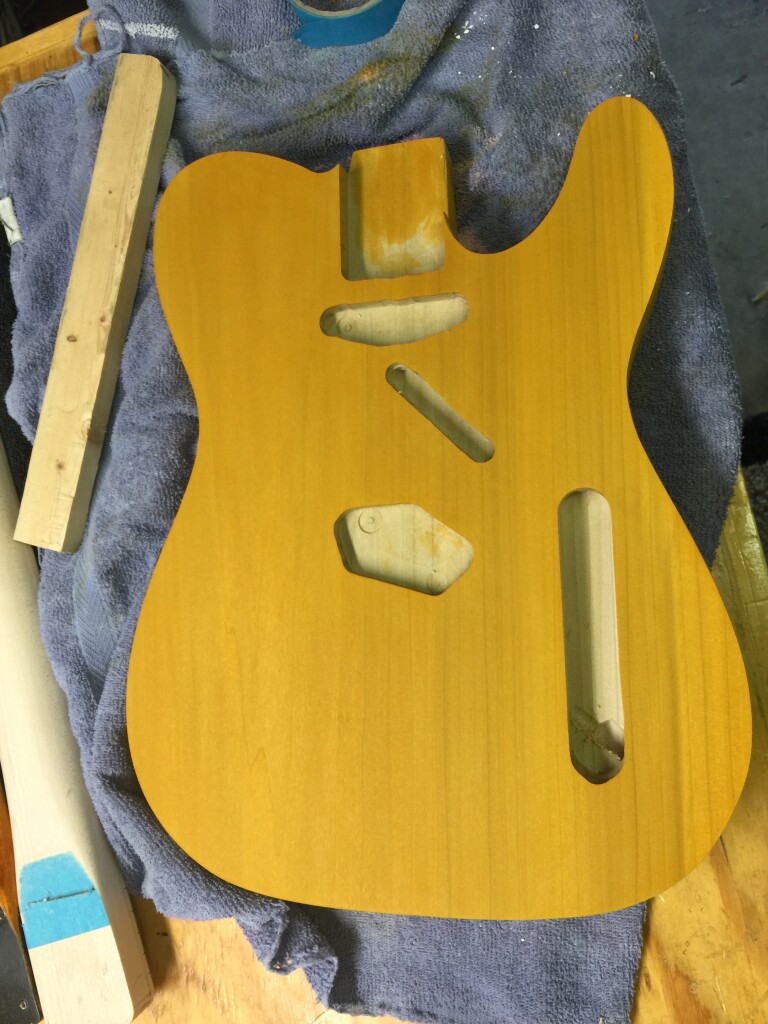
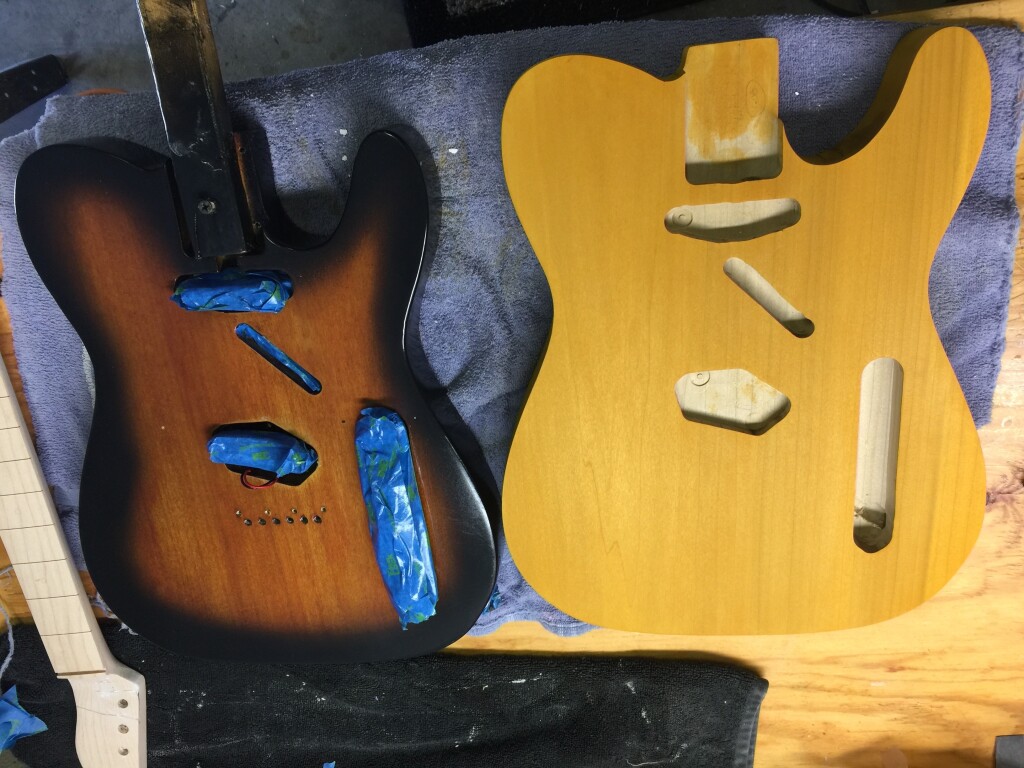
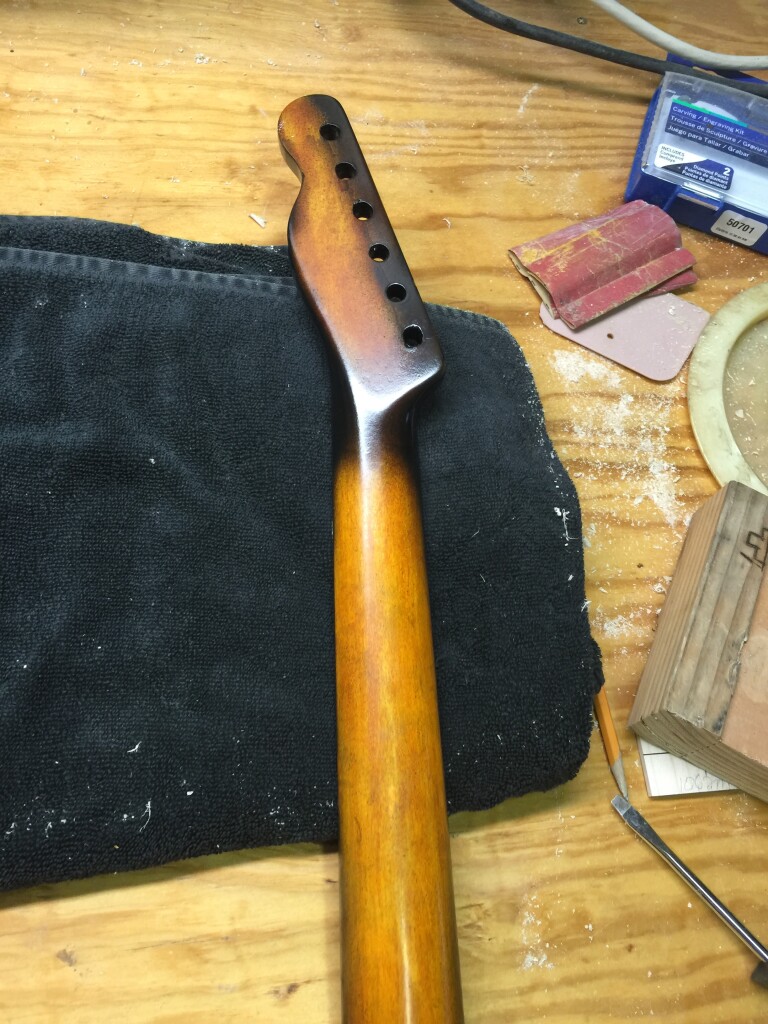
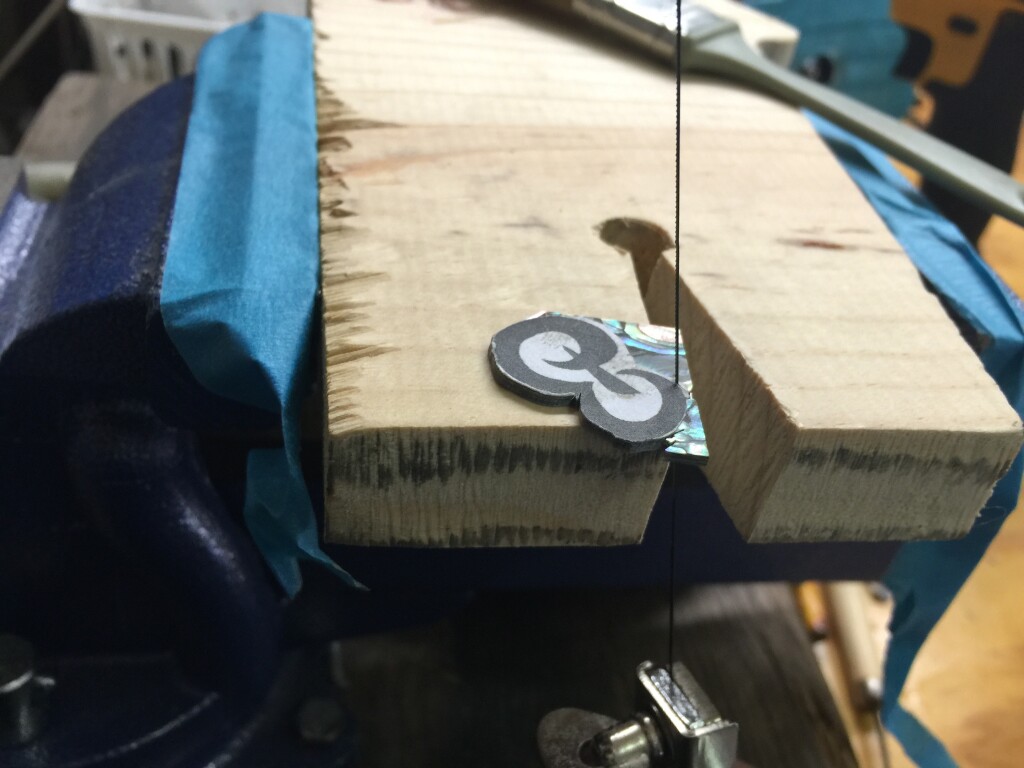
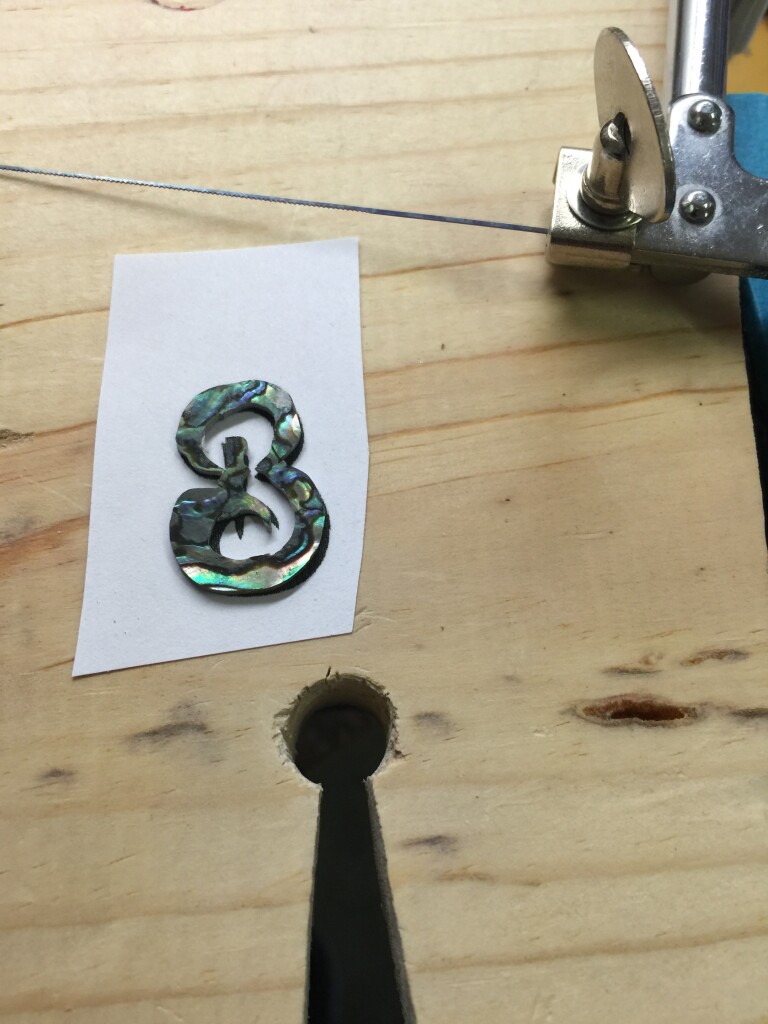
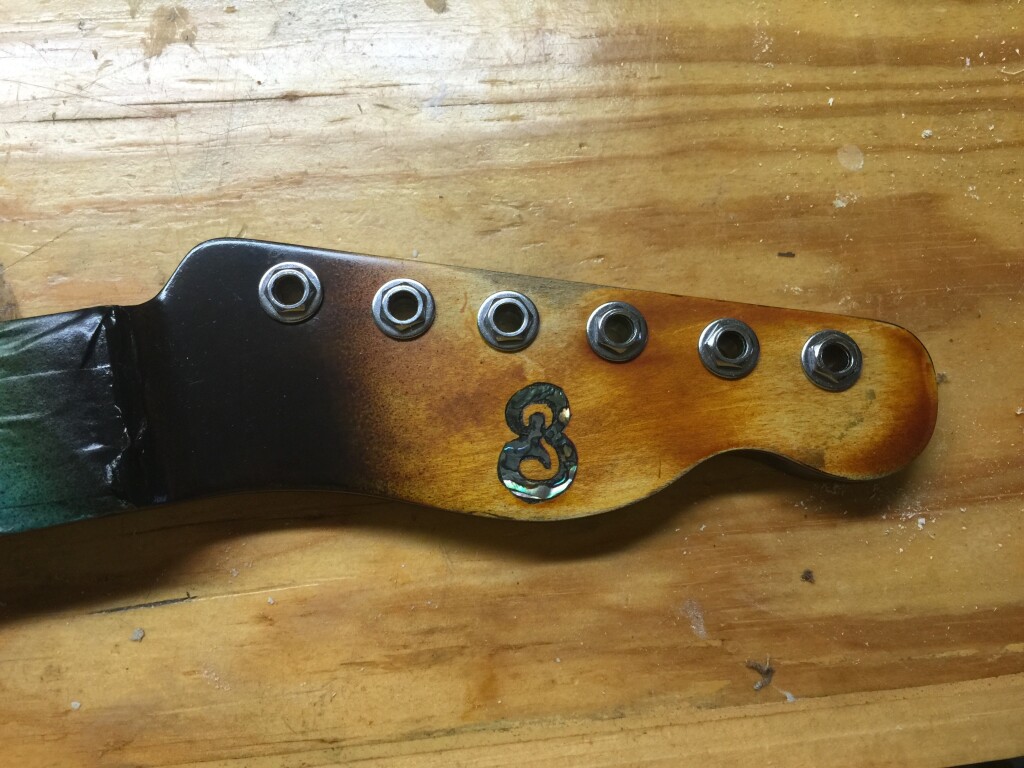
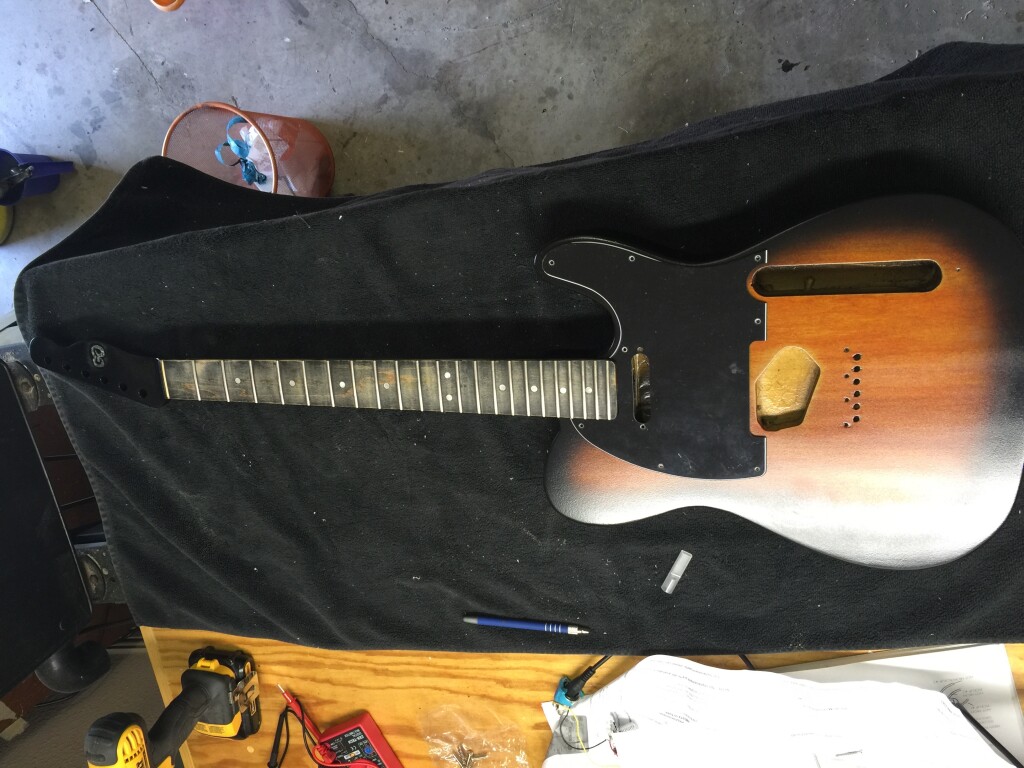
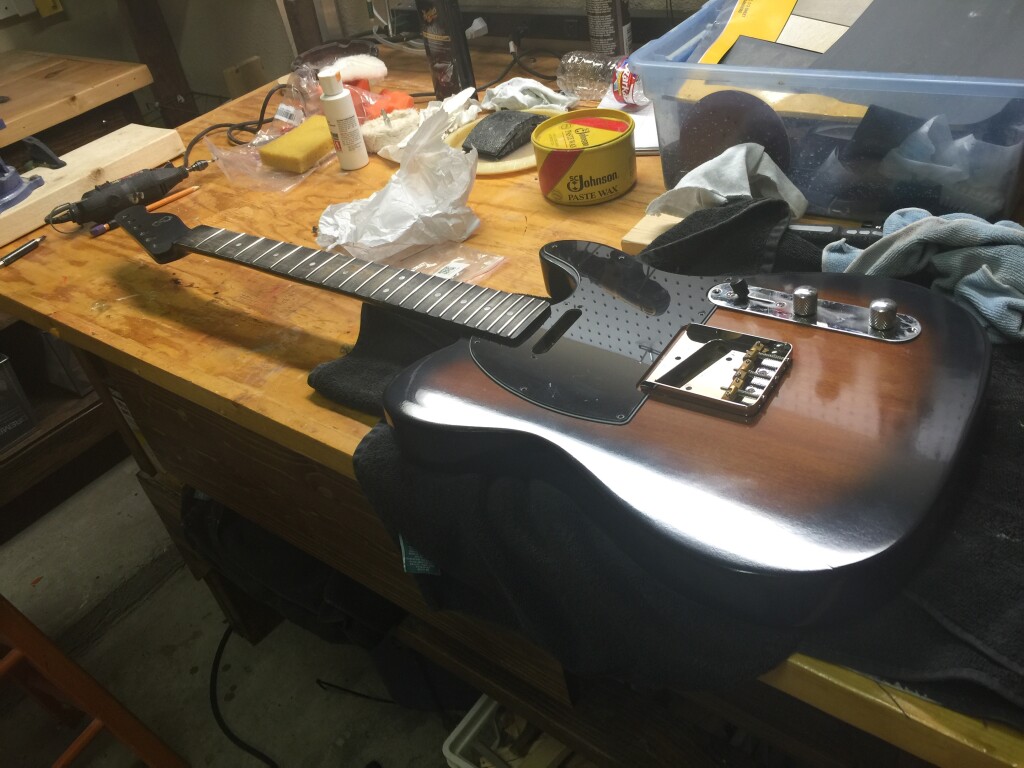
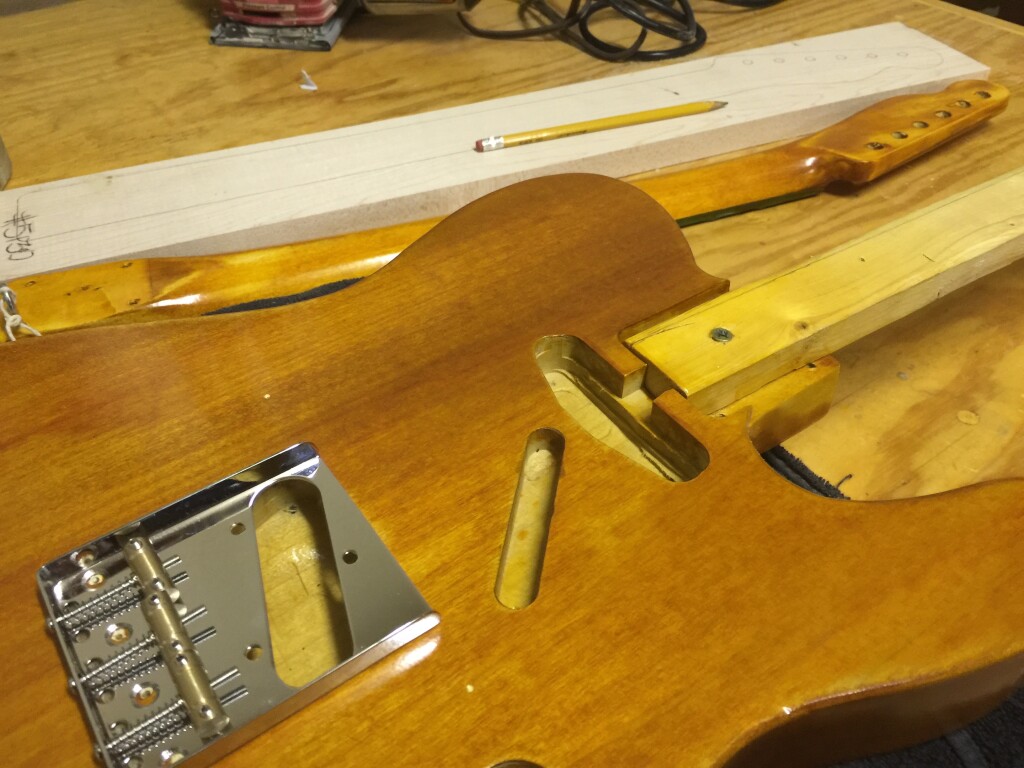
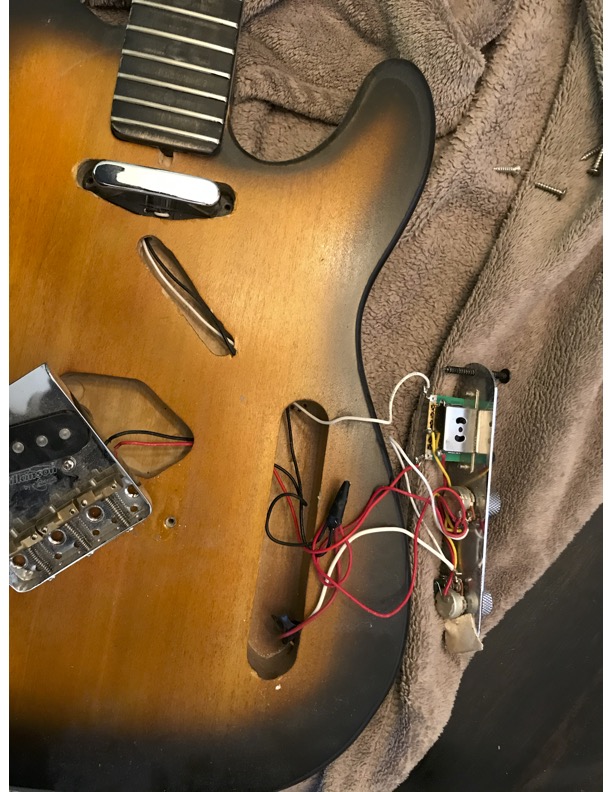
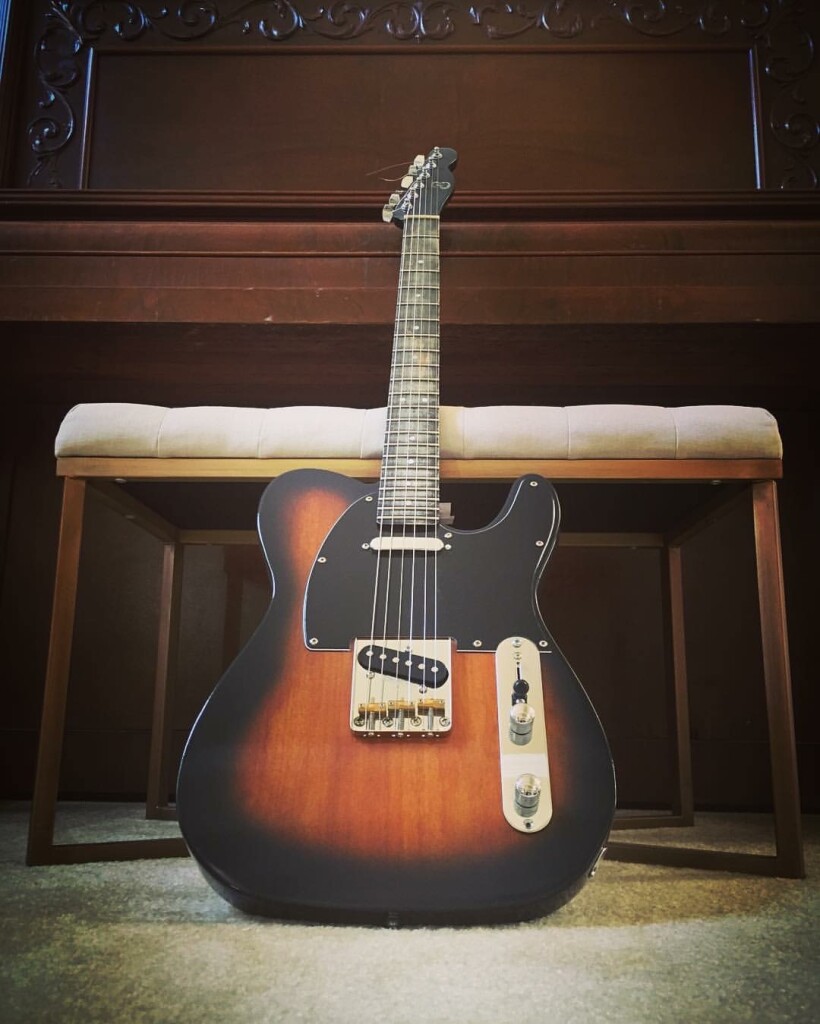
Here are a few other builds I’ve done semi-recently. During the lockdown, I built a viral green mini electric guitar using scrap parts. It’s like Frankenstein only smaller.
More recently, I built a 3-string box slide guitar. I used scrap wood from a failed acoustic build and made the neck out of banister oak. The frets are nails, the bridge is a rusty old hinge and for the saddle and nut I used a drywall screw and a bolt.
